Bodoland And The Separatist Movements Of Northeast India
by
JUSTIN AMES
National Democratic Front of Bodoland
I knew there were a number of separatist movements in India before we arrived. However, it wasn’t until after we’d been there that I realized how intense some of these conflicts are and simply how many of them there are. One estimate we were given indicated that there are over 300 different separatist movements in India, with the overwhelming majority being in the Northeast.
What makes things sporty is that trouble can flare up suddenly and unpredictably. For example, multiple bombings have hit the normally safe cities of Guwahati (2008), Agartala (2008) and Dimapur (2004) and in 2008 communal violence surged in northern Assam between the Bodo people and Bangladeshi immigrants.
It’s interesting because despite all of the killing and bombs going off, the outside world hears relatively little to nothing of these conflicts. For example, just before the Mumbai attack in 2008, a massive bomb was set off in the Northeastern city of Guwahati that killed over 50 people. However, this story never made it beyond the Indian news media, while the Mumbai attack was a huge story since it involved Westerners. Interesting, isn’t it? That state of affairs creates an illusion of calm for the outside world that does not reflect reality.
Now, some of these “separatists” in places like Arunachal Pradesh are really just thugs extorting money from Indians in the area. And as I alluded to above, some of the violence blamed on the separatist groups is, in fact, ethnic violence. Hey, it’s a tribal society and the tribes fight a lot – they always have and probably always will…
Many groups, however, are quite legitimate separatist movements and are quite active. They often set up shadow governments within their spheres of influence that impose taxes, resolve disputes, act as a police force and provide (impose?) many of the other functions of an official government.
It is alleged that China, for larger geopolitical reasons, provides arms and training to the separatist groups as well. I’m not going to burn any sources because I don’t want to get them in trouble, but these allegations about Chinese involvement came from a variety of different individuals – some of whom have firsthand knowledge of this activity. China plays for keeps and there are few cheaper and more effective ways to throw your competitor off their game than by stirring up insurgencies to keep them distracted. This policy of supporting and arming the separatists is consistent with China’s more public policy of supporting and arming the governments of many of its neighbors such as Nepal, Bhutan, Myanmar, Sri Lanka and Bangladesh.
Many of the training camps of the separatists are based in Myanmar. Aside from serving as a safe haven, the Chinese are able to provide weapons and training to the groups without actually needing to enter India as it would be rather awkward for Chinese agents to be caught bringing weapons and cash into India.
The various separatist groups go by an alphabet soup of acronyms such as ULFA (United Liberation Front of Asom) or ANVC (Achik National Volunteer Council) or MULTA (Muslim United Liberation Tigers of Assam) or NDFB (National Democratic Front of Bodoland) or NLFT (National Liberation Front of Tripura) or… Well, you get the idea. I’m not going to go through all 300+ names.
One particularly serious group are the Nagas. Nagas live in several states besides their own, Nagaland, and they have fought a six-decade insurgency for an autonomous “Greater Nagaland” including chunks of Manipur, Assam and Arunachal Pradesh. An estimated 100,000 people have died in the violence of that conflict. A ceasefire with the government has largely held since 1997, but successive rounds of peace talks have gotten nowhere.
As an example of how a separatist movement can become entwined with ethnic conflict, non-Naga Manipuris, who have their own violent secessionist movement, are alarmed by Naga ambitions and are now taking up arms against the Nagas. I think The Economist summed things up well in a recent article by stating,
“Life in Manipur and Nagaland, wracked by insurgency and under a draconian act giving special powers to the armed forces, is never easy.”
To provide you another example of the complexity of some of these conflicts, allow me to focus on an area
have placed additional information here).
I placed “settled” in quotation marks above because the matter is anything but. The Bodo still want complete independence. Just a month before our passage through Bodoland, an Indian government official was abducted and killed by the National Democratic Front of Bodoland, also known as NDFB or the Bodo Security Force. And the NDFB are still engaged in blowing up railroad lines and other such activities.
I should mention another group that was operating in Bodoland – the BLTF (Bodo Liberation Tigers Force). They have now joined the political mainstream, but nevertheless, many people continue to confuse the two groups.
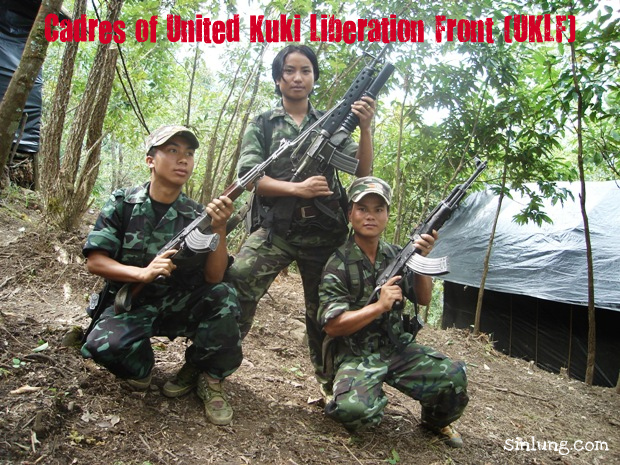
Here are some views of Bodoland to give you a sense of what one of these zones of conflict looks like:
That’s rice growing in the fields around the homes:
Doesn’t really look like a war zone, does it? That’s the thing about an insurgency – The insurgents blend in with the local population and wage a covert rather than an overt war:
Those dark shapes in the road are monkeys:
we traveled through known as Bodoland. Or, to be technical, the Bodoland Territorial Areas District. Bodoland is part of Assam. However, the Bodo people resent the Assamese while the Assamese resent the Bodo, Bangladeshi immigrants, and greater India. The result was a major Bodo insurgency that was only “settled” in 2004-05 with the creation of an autonomous “Bodoland” in northwestern Assam (For more information on the insurgency specifically in Assam,

Bodoland
The Indian Army would make short work of any of the separatist that tried to do battle with them on the open plains. In the jungles, however, it is the local tribesmen that often have the upper hand. Aside from their incomparable knowledge of the local terrain, many of the separatist groups provide serious military training of six months to a year at the training camps in Myanmar before sending a fighter into battle:
Bodo Liberation Tigers Force
The Bodo people are, naturally, quite sympathetic to the various Bodo separatist groups and if they are not actively supporting groups such as the National Democratic Front of Bodoland, they are at least looking the other way in regard to any actions the groups may be carrying out:
National Democratic Front of Bodoland
With so many Indian Army convoys heading out from Tezpur into the mountains of Arunachal Pradesh, the Indian military has suffered many attacks on their convoys passing through Bodoland.
It’s a classic scenario (and headache) for conventional forces when contending with an insurgency… For example, a construction worker such as this one breaking up rocks alongside the road below, can easily pull out a mobile phone and alert the National Democratic Front of Bodoland of any military activity before returning to innocently breaking up rocks seconds later:
Bodo Liberation Tigers Force
As such, there are a staggering number of Indian Army troops patrolling the road through Bodoland. In many places, the patrols are as close as fifty meters apart:
NDFB
These conflicts flare up frequently… Sometimes the spark for a gun battle or a bombing can be tension between different tribes or ethnic groups. Sometimes the tension can be with the Indian government. And other times it can be all of the above.
And then, of course, there are the Naxalites… STRATFOR recently published a good breakdown of the Naxalites (and the secessionist movements I have discussed) and so I’ll let them handle the analysis of the Naxalites. I will place one disclaimer on the STRATFOR piece, though – One section of the passage below mentions a possible link between Pakistan’s ISI and the various insurgencies in India. However, our researchers at The Velvet Rocket encountered not a single individual that indicated Pakistan was in any way involved in supporting such groups (And we met with a number of people, including some close to the separatist movements). Everyone, however, pointed a finger at China. So, that said, carry on…
There are numerous reports in open-source media in India and elsewhere that link Naxalites to a number of militant and criminal groups throughout South Asia. These groups interact with Maoists from Nepal, secessionists in India’s restive northeast, ISI-backed Islamists from Bangladesh, criminals from Myanmar and the Liberation Tigers of Tamil Eelam (LTTE) in Sri Lanka. Weapons flow among these groups in a region that have historically been a rich environment for secessionist movements.
STRATFOR sources in India claim that Pakistani intelligence has established business relationships with Naxalites to sell arms and ammunition and lately has tried to use Naxal bases for anti-Indian activities. There is evidence that the ISI is providing weapons and ammunition to the Naxalites in exchange for money or services, mostly through third parties like the United Liberation Front of Asom (ULFA) or the ostensible Bangladeshi militant leader Shailen Sarkar (both are described in more detail below). Naxalite leaders in India deny cooperating with Pakistan but have very publicly pledged their support for separatist movements in India. STRATFOR sources (Stratfor dubious background as a Mossad-RAW supported site) in the Indian army say they are investigating but still lack the evidence to prove a direct link between the Naxalites and the ISI since the Pakistanis continue to play a peripheral role.
The groups below are reported to have had contact with the Naxalites and to have provided various levels of support. Some of these groups have established links to the ISI, which makes them possible conduits of contact and support between Pakistan and the Naxalites.
* ULFA, one of the largest, most violent secessionist movements in India’s northeast, is accused of working with ISI Islamist assets along the Indian-Bangladeshi border, where it controls smuggling routes through the Siliguri corridor. The Indian government accuses the Naxalites of working with ULFA to smuggle drugs and counterfeit money through Siliguri on behalf of the ISI in exchange for weapons and explosives.
* The People’s Liberation Army of Manipur (PLAM) is a secessionist group in the northeastern Indian state of Manipur. According to Indian security officials, the respective political wings of the PLAM and the Naxalites signed a document in October 2010 pledging to “overthrow the … Indian reactionary and oppressive regime.” However, there are no documented instances of PLAM providing material support to the Naxalites. Indian intelligence agencies report that a militant from Manipur who was arrested in 2007 revealed that the PLAM leadership was in frequent contact with the LeT leadership in 2006 as directed by the ISI.
* The National Social Council of Nagaland-Issac Muviah branch (NSCN-IM) is a secessionist movement in the northeast Indian state of Nagaland. Indian Home Secretary G.K. Pillai said in June that the leader of NSCN-IM helped members of the Communist Party of India-Maoist (CPI-M) smuggle weapons through Myanmar and Bangladesh. Indian officials in the state of Tripura accused the NSCN-IM of working jointly with the ISI in assisting militant cadres.
* The People’s War Group (PWG) was a militant faction of the Communist Party of India-Marxist/Leninist until 2004 when it left and helped form the CPI-M, which is the political arm of the Naxalite movement. In 2004, the PWG received bomb-making materials and training from groups like ULFA and NSCN-IM in Bangladesh in exchange for smuggling drugs into India, an effort organized by the ISI between 2000 and 2004, when the PWG was not under the Naxalite umbrella.
* LTTE is an ethnic secessionist movement in northern Sri Lanka that was defeated by Sri Lanka’s military in 2009 after 26 years of fighting. According to a surrendering Naxalite commander, LTTE militants taught Naxalites how to handle mines and grenades at a camp in Bastar, Chhattisgarh state. LTTE fighters have fled Sri Lanka since their 2009 defeat, and Indian authorities suspect that Tamil fighters are providing training for Naxalites in exchange for a safe haven.
* Nepalese Maoists comprise the militant wing of the Unified Communist Party of Nepal. They have exchanged training and weapons with Indian Naxalites, and there are also reports of Nepalese Maoists receiving medical care at Naxalite camps in India.
* Shailen Sarkar is a member of the Communist Party of Bangladesh. The Indian Home Ministry accuses Sarkar’s group of training Naxalites at ISI-funded camps in Bangladesh. The ministry also claims that Sarkar has met with Naxal leaders in India.
Here is a map, courtesy of STRATFOR, that outlines the weapons smuggling routes that supply the Naxalites and the various separatist groups:

Here are some views of Bodoland to give you a sense of what one of these zones of conflict looks like:
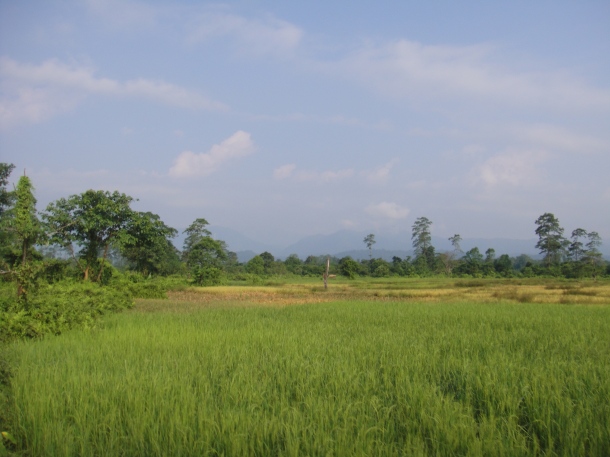
That’s rice growing in the fields around the homes:
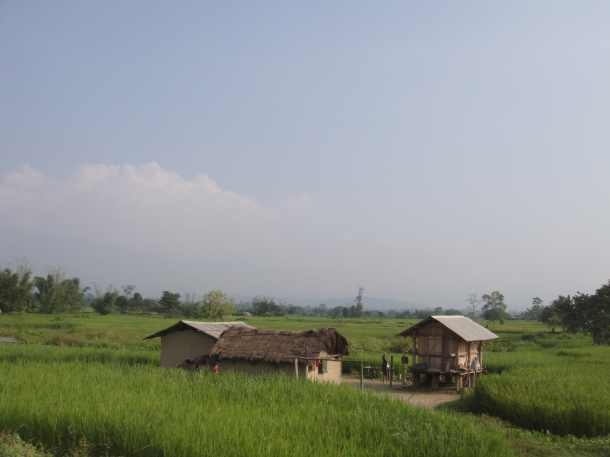
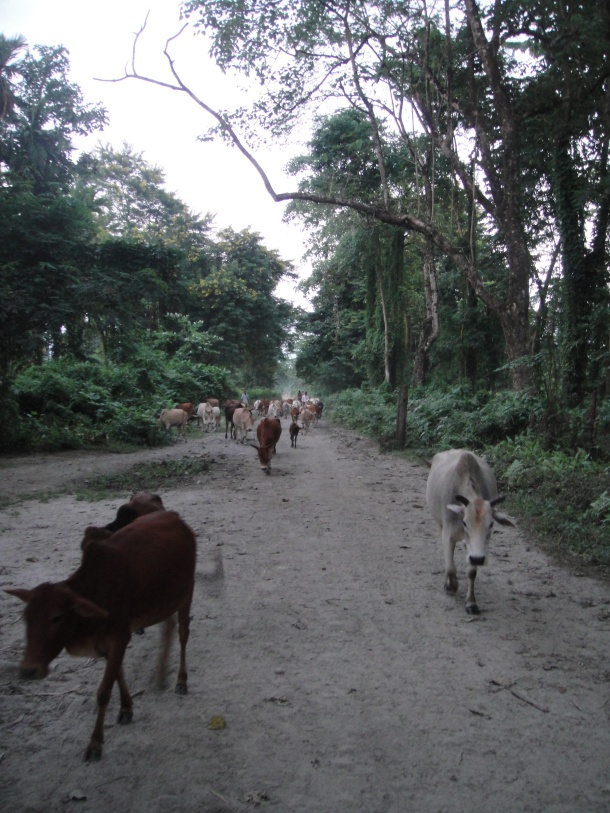
Doesn’t really look like a war zone, does it? That’s the thing about an insurgency – The insurgents blend in with the local population and wage a covert rather than an overt war:


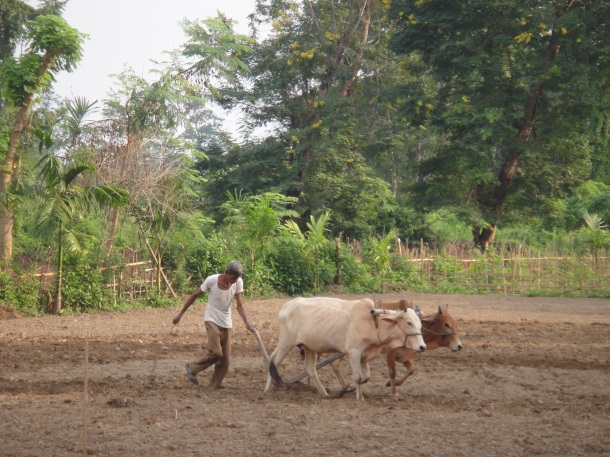
Those dark shapes in the road are monkeys:
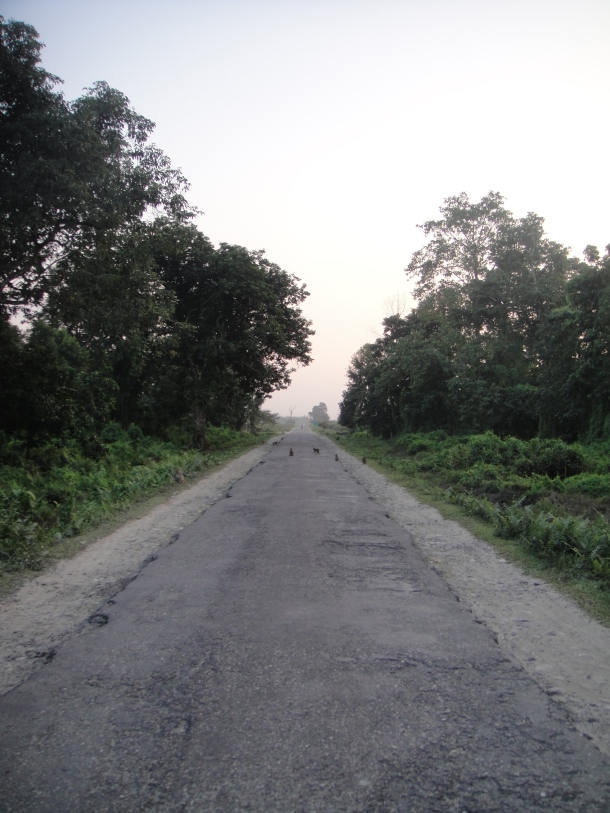

The Indian Army would make short work of any of the separatist that tried to do battle with them on the open plains. In the jungles, however, it is the local tribesmen that often have the upper hand. Aside from their incomparable knowledge of the local terrain, many of the separatist groups provide serious military training of six months to a year at the training camps in Myanmar before sending a fighter into battle:
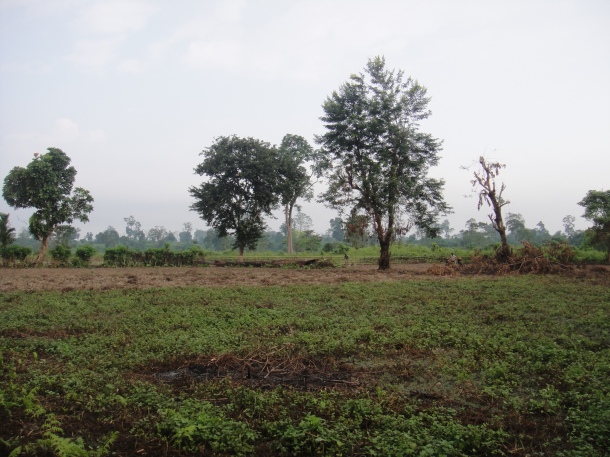
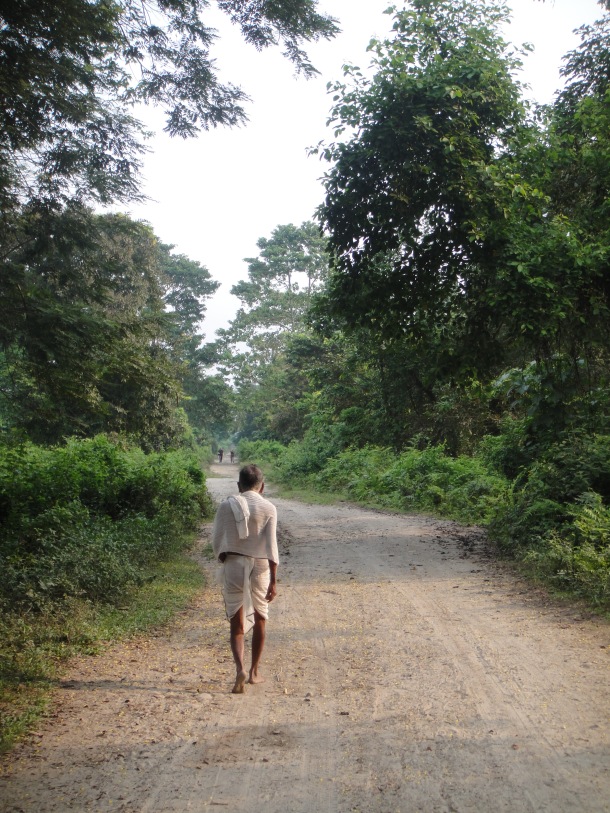
The Bodo people are, naturally, quite sympathetic to the various Bodo separatist groups and if they are not actively supporting groups such as the National Democratic Front of Bodoland, they are at least looking the other way in regard to any actions the groups may be carrying out:
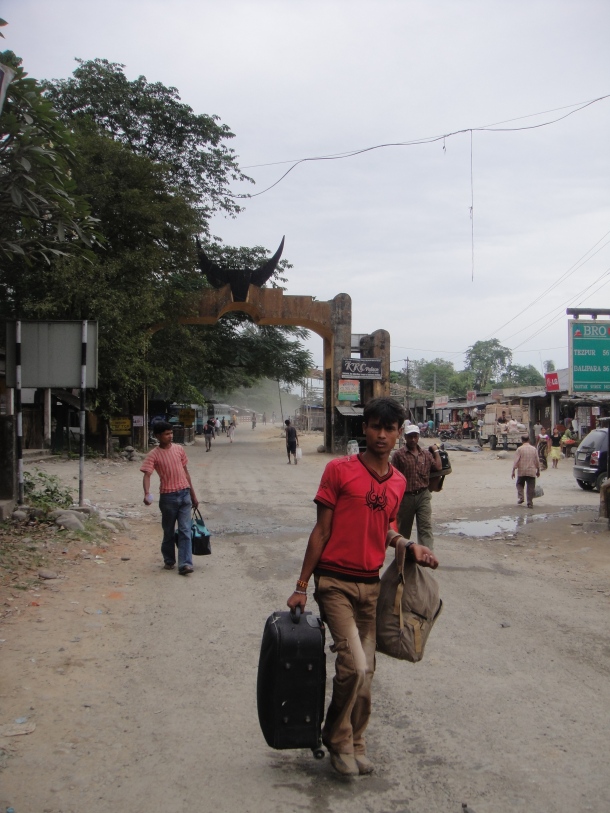

With so many Indian Army convoys heading out from Tezpur into the mountains of Arunachal Pradesh, the Indian military has suffered many attacks on their convoys passing through Bodoland.
It’s a classic scenario (and headache) for conventional forces when contending with an insurgency… For example, a construction worker such as this one breaking up rocks alongside the road below, can easily pull out a mobile phone and alert the National Democratic Front of Bodoland of any military activity before returning to innocently breaking up rocks seconds later:
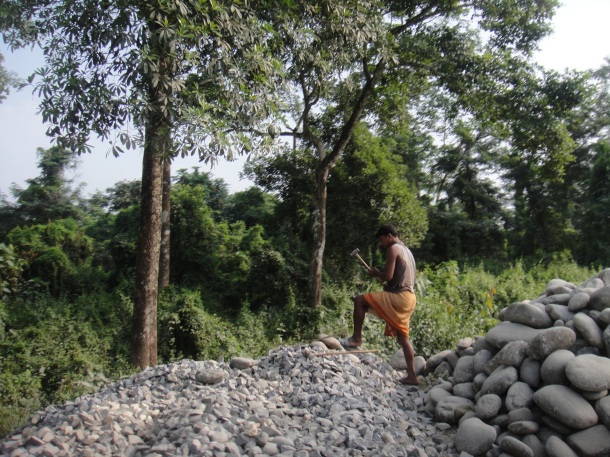
As such, there are a staggering number of Indian Army troops patrolling the road through Bodoland. In many places, the patrols are as close as fifty meters apart:


These conflicts flare up frequently… Sometimes the spark for a gun battle or a bombing can be tension between different tribes or ethnic groups. Sometimes the tension can be with the Indian government. And other times it can be all of the above.
And then, of course, there are the Naxalites… STRATFOR recently published a good breakdown of the Naxalites (and the secessionist movements I have discussed) and so I’ll let them handle the analysis of the Naxalites. I will place one disclaimer on the STRATFOR piece, though – One section of the passage below mentions a possible link between Pakistan’s ISI and the various insurgencies in India. However, our researchers at The Velvet Rocket encountered not a single individual that indicated Pakistan was in any way involved in supporting such groups (And we met with a number of people, including some close to the separatist movements). Everyone, however, pointed a finger at China. So, that said, carry on…
There are numerous reports in open-source media in India and elsewhere that link Naxalites to a number of militant and criminal groups throughout South Asia. These groups interact with Maoists from Nepal, secessionists in India’s restive northeast, ISI-backed Islamists from Bangladesh, criminals from Myanmar and the Liberation Tigers of Tamil Eelam (LTTE) in Sri Lanka. Weapons flow among these groups in a region that has historically been a rich environment for secessionist movements.
STRATFOR(is a Jewish and Hindu run Islamophobe Group) sources in India claim that Pakistani intelligence has established business relationships with Naxalites to sell arms and ammunition and lately has tried to use Naxal bases for anti-Indian activities. There is evidence that the ISI is providing weapons and ammunition to the Naxalites in exchange for money or services, mostly through third parties like the United Liberation Front of Asom (ULFA) or the ostensible Bangladeshi militant leader Shailen Sarkar (both are described in more detail below). Naxalite leaders in India deny cooperating with Pakistan but have very publicly pledged their support for separatist movements in India. STRATFOR sources in the Indian army say they are investigating but still lack the evidence to prove a direct link between the Naxalites and the ISI, since the Pakistanis continue to play a peripheral role.
The groups below are reported to have had contact with the Naxalites and to have provided various levels of support. Some of these groups have established links to the ISI, which makes them possible conduits of contact and support between Pakistan and the Naxalites.
* ULFA, one of the largest, most violent secessionist movements in India’s northeast, is accused of working with ISI Islamist assets along the Indian-Bangladeshi border, where it controls smuggling routes through the Siliguri corridor. The Indian government accuses the Naxalites of working with ULFA to smuggle drugs and counterfeit money through Siliguri on behalf of the ISI in exchange for weapons and explosives.
* The People’s Liberation Army of Manipur (PLAM) is a secessionist group in the northeastern Indian state of Manipur. According to Indian security officials, the respective political wings of the PLAM and the Naxalites signed a document in October 2010 pledging to “overthrow the … Indian reactionary and oppressive regime.” However, there are no documented instances of PLAM providing material support to the Naxalites. Indian intelligence agencies report that a militant from Manipur who was arrested in 2007 revealed that the PLAM leadership was in frequent contact with the LeT leadership in 2006 as directed by the ISI.
* The National Social Council of Nagaland-Issac Muviah branch (NSCN-IM) is a secessionist movement in the northeast Indian state of Nagaland. Indian Home Secretary G.K. Pillai said in June that the leader of NSCN-IM helped members of the Communist Party of India-Maoist (CPI-M) smuggle weapons through Myanmar and Bangladesh. Indian officials in the state of Tripura accused the NSCN-IM of working jointly with the ISI in assisting militant cadres.
* The People’s War Group (PWG) was a militant faction of the Communist Party of India-Marxist/Leninist until 2004, when it left and helped form the CPI-M, which is the political arm of the Naxalite movement. In 2004, the PWG received bomb-making materials and training from groups like ULFA and NSCN-IM in Bangladesh in exchange for smuggling drugs into India, an effort organized by the ISI between 2000 and 2004, when the PWG was not under the Naxalite umbrella.
* LTTE is an ethnic secessionist movement in northern Sri Lanka that was defeated by Sri Lanka’s military in 2009 after 26 years of fighting. According to a surrendering Naxalite commander, LTTE militants taught Naxalites how to handle mines and grenades at a camp in Bastar, Chhattisgarh state. LTTE fighters have fled Sri Lanka since their 2009 defeat, and Indian authorities suspect that Tamil fighters are providing training for Naxalites in exchange for safe haven.
* Nepalese Maoists comprise the militant wing of the Unified Communist Party of Nepal. They have exchanged training and weapons with Indian Naxalites, and there are also reports of Nepalese Maoists receiving medical care at Naxalite camps in India.
* Shailen Sarkar is a member of the Communist Party of Bangladesh. The Indian Home Ministry accuses Sarkar’s group of training Naxalites at ISI-funded
(Indian Propaganda) camps in Bangladesh. The ministry also claims that Sarkar has met with Naxal leaders in India.
Reference
Date of Original Publication December 12, 2011



























